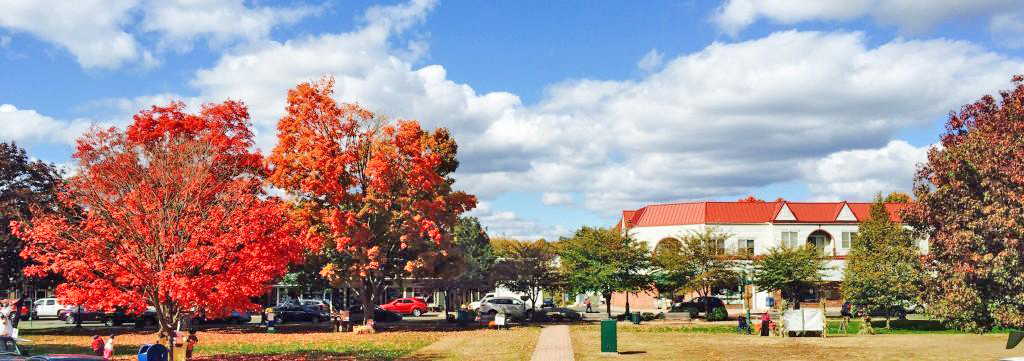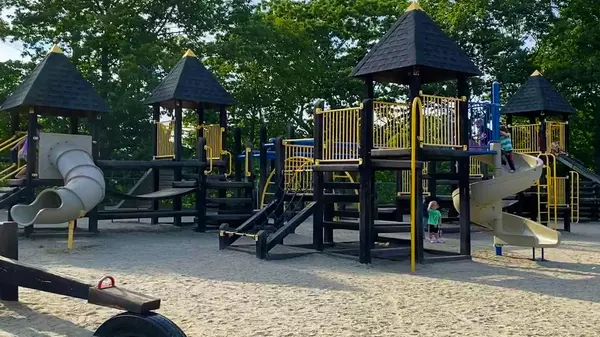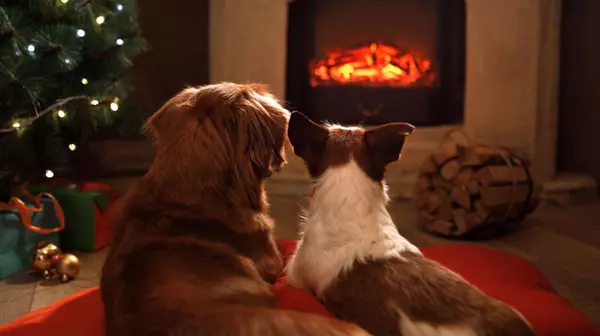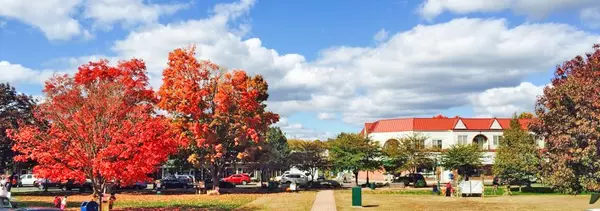Fall Home Maintenance Checklist – 20 tips to prepare your home for the winter
by Daniel Lussier

The mesmerizing fall colors have been at full peak for the past few weeks. Autumn in New England is truly unique. The rich yellows, reds, oranges, and greens blanket the valleys and hills like an intricate quilt. All you have to do it hop in your car and head for one of the scenic routes to get your fill of the Fall magic. We love taking a scenic drive with our kids to Chatfield Hollow in Killingworth, CT, where nature’s beauty is at its best.
Changing of the seasons also means making sure your home is ready for the Winter season, especially in a part of country where snowplows can’t always keep up with mother nature. Here is fall home maintenance checklist, with 20 tips to help you enjoy the Winter without worrying about your home.
Fall Maintenance Checklist

EXTERIOR OF THE HOUSE
1. Check the roof. Do you see any loose or missing shingles, peeling pieces, or any areas ripped off by tree branches? Repairing any damaged areas of your roof will help prevent the moisture from snow and rain from getting into your house, and will protect your home from the drastic changes in temperature and humidity. Hire a licensed professional to fully inspect your roof and make any necessary repairs. In addition, check the flashing around any pipes, chimneys, and skylights for leaks and gaps, areas prone to allowing water into your home.
TIP: The average lifespan of a standard, shingle roof is roughly 10 years. If your roof is nearing that age, you want to have it replaced. Note, that many states only allow two layers of shingles on your roof to prevent the weight from crushing your roof. After two layers, the roof should be entirely replaced.
2. Clean and repair your gutters. Well maintained gutters allow the rain to flow freely down and away from your roof and house. Gutters clogged with leaves and debris prevent water from draining properly, and may result in rain getting into your house through the roof or foundation. Clean out your gutters and downspouts by removing any leaves and clogs, and flushing them out with water. Make any necessary repairs to ensure the gutters will handle the weight of snow and ice.
3. Check for any peeling paint. Your siding is the outmost protective blanket of your home. Peeling paint exposes your siding to the harsh weather elements and will lead to faster deterioration. Take advantage of the cooler air and humidity to repaint your home, if necessary.
TIP: A high quality paint will last longer and protect your home better, and can be a more efficient solution than several coats of thin, low-quality paint. Our go-to brand is Sherwin Williams.
4. Insulate windows and doors. One of the biggest hits to your wallet during the Winter season is your heating bill. You can significantly reduce your heating costs by making sure all windows and doorframes are well insulated and caulked. If you can feel a draft when you place your hand at the bottom of the door or side of a window, then that same draft will suck the heat right out of your house. Caulk your windows and doorframes on the exterior to close up an gaps and prevent heat from escaping. Add a door duster at the bottom of your door to eliminate drafts in that spot.
5. Repair damaged driveways and sidewalks. Check your driveway, sidewalk, and steps for any cracks. Repair and seal the cracks to prevent ice from expanding the damage.
6. Shut off and insulate your exterior water valves. As temperatures drop, any remaining water trapped in the pipes will freeze and as it expands, may potent burst your pipes. Drain the pipes by running the water until empty.
TIP: Wrap and Insulate any water pipes running through an unheated basement or along exterior walls to prevent freezing and save energy.
7. Keep the pests out. Rats, mice, and other pests are a common problem during Winter, as animals find good shelter in the warmth of your home. Prevent pests from entering your house by closing off any points of entry. Check for holes under the sink cabinet, cracks in basement windows and doors, small holes in foundation, and gaps in roof or siding.
8. Clean and cover Air Conditioning units. Clean out your air conditioning units by vacuuming the internal parts, and cover external units with an approved air conditioning cover to prevent it from rusting. Window units can be removed and stored until next Summer, once removed the window should be inspected and sealed (see tip above).

INTERIOR
9. Prepare your fireplace. We look forward to sitting by our fireplace, snuggled up in blankets and sipping on hot chocolate. We just had our first fireplace evening last weekend, and loved how the space fill up with a playful crackling and glow. Before using your fireplace, inspect it for any damage to the chimney and any animals or birds nesting in the chute (yes, it happens!). If your fireplace hasn’t been used in a while, have a licensed chimney sweep come service it to prevent chimney fires and carbon monoxide poisoning.
TIP: Check for and remove the damper before starting a fire in your fireplace. As the fire burns, the smoke escapes up through the chimney. A damper closes that route off and you will end up with a room full of smoke. Once you are done using the fireplace, close the damper again to prevent heat from escaping.
10. Inspect your heating system. Summer is over, the temperature dips and you run for the thermostat to turn your heat on for the first time this season. The furnace turns on and your house fills with a nice, warm air. You can hold off on the sweaters for a bit more! Then, the temperature suddenly dips below freezing and your furnace coughs a few times and decides to quit. Where are the sweaters?! As you bundle yourself and your kids up in scarves and coats, you call the first heating service provide that will answer your call at 10pm to come an fix your furnace. The furnace always seems to break at the worst time! Have your system inspected before the harsh temperatures to avoid any unpleasant surprises.
TIPS:
Oil Heating – New England is known for oil heating. If you have an oil heating system, create reminders in your calendar to check the oil level in the tank so you don’t run out of heat on the coldest day of the season.
Gas Heating – Gas heating is one of the most efficient and cost effective heating systems, but can be costly to implement if your street does not offer access to a gas line. Often times, the utility company will run a pipe line through your street if all the neighbors agree to it, and you can split the cost between several households.
Electric Heating – Electric heating is occasionally used to heat small spaces, such as studio apartments or basements. It’s an effective method, however it is the most costly of all three. Check rates with your electrical company before deciding to install electric baseboards in your home.
11. Clean and reverse your ceiling fans. Ceiling fans are notorious for collecting dust on the blades. Clean the blades regularly to prevent dust from being redistributed into the room. Reverse the direction of the fan to help pull warm air up and improve its flow through the room.
12. Check the attic insulation. Check to see that the attic insulation is installed properly, with the vapor barrier facing down.
13. Change batteries in your smoke and carbon monoxide detectors. Check that your smoke detectors are working properly and are within earshot of bedrooms and living areas. Check that a carbon monoxide is present near a potential source of the gas, such as oil or gas stoves, furnaces and water heaters. During heavy snowfall, check that the ventilation around the house has not been buried under the snow, potentially trapping gases in your home.
14. Keep a fire-extinguisher easily accessible. Have a working fire-extinguisher stored in an easily accessible place ready for operation.

YARD
15. Drain, clean, and store away seasonal yard equipment. Drain fuel from any gas-operated equipment, including chain saws, lawn mowers, leaf blowers, etc, to prevent damage to the system. Put away any shovels and rakes. They can get covered up by the snow and may pose a risk of injury if someone accidental steps on them.
TIP: Snow blowers come in many variations and sizes. Select one to suit your needs, and look for a key-starter option for a quick, cordless start.
16. Prepare your snow equipment. Put your snow shovels and roof rakes in an easily accessible spot so when the first big snowfalls comes, you won’t have to dig around for them. Inspect your snow blower and fill it with gas, then make sure it starts and runs smoothly. Have bags of sand or pet-friendly salt available to sprinkle over your stairs, sidewalk, and driveway to break down any ice buildup and prevent injury from falls.
TIP: Each state has different laws regarding the use of sand and salt for breaking down the ice. Check with your state to see what’s allowed.
17. Winterize your deck furniture. Cover and store any outdoor furniture in a protected area, such as your garage or basement. Clean out the grill, cover and store it.
18. Protect plants and perennials. Move any outdoor potted plants into the basement or other protected space to shield them from freezing. Clean out any outdoor pots and planters to prevent the soil from freezing and breaking the pots. Mulch around the perennials, their root ball is typically strong enough to survive the winter, especially when protected with mulch.
19. Rake and mulch the leaves. To keep your grass healthy and free of insects and disease, rake the leaves as much as possible before snow covers the ground. Instead of throwing the leaves out in brown bags, recycle them by using a mulching mower and spread the mulch over your garden or any flower beds. The mulched leaves will provide nutrients to your plants and soil.
20. Revitalize your lawn. Aerate grass, then spread fertilizer and grass seed to let it germinate before the winter temperatures set in. This will allow your lawn to strengthen its root system and grow better in the Spring.
Categories
Recent Posts










"My job is to find and attract mastery-based agents to the office, protect the culture, and make sure everyone is happy! "
